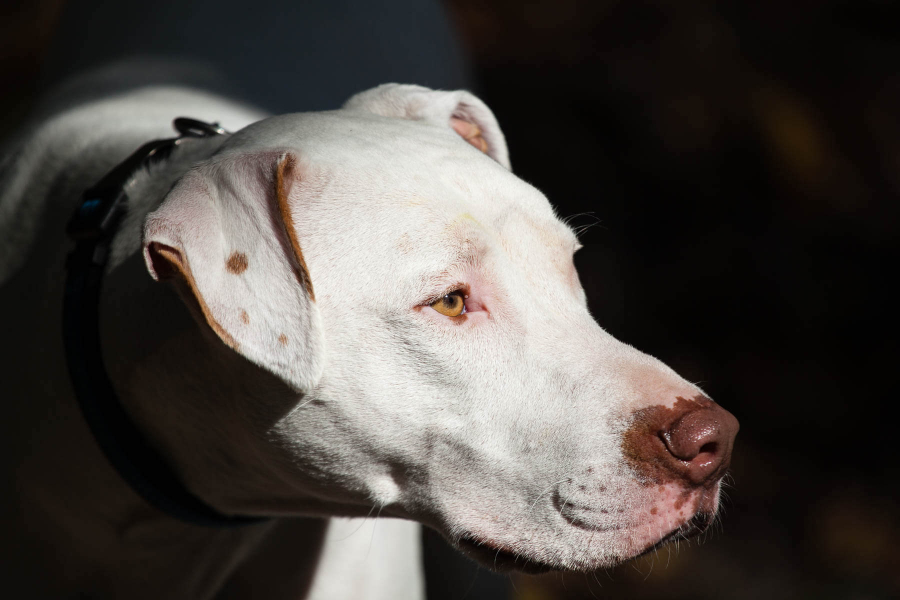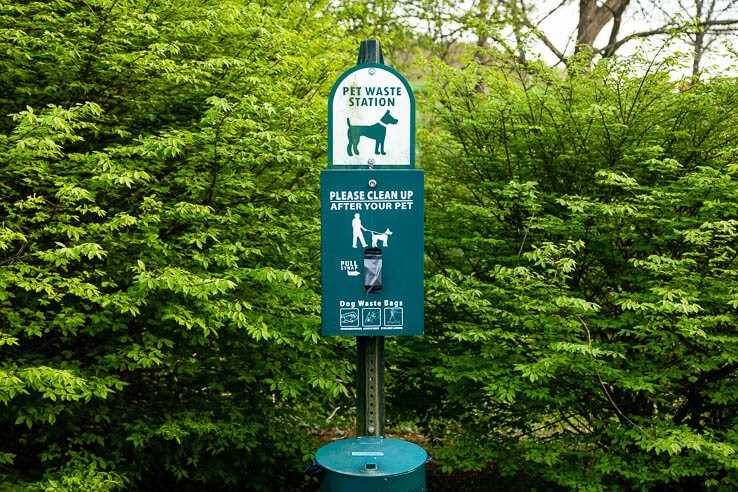The scoop on poop
How pet waste pollutes the watershed and how you can help prevent it

It’s no secret that humans love dogs. Writers, comedians and presidents alike have famously proclaimed their love and respect for their furry, four-legged friends.
“I think dogs are the most amazing creatures; they give unconditional love. For me, they are the role model for being alive.” – Gilda Radner
Thirty-six percent of American households own at least one dog, and with all of those dogs comes a lot of poop. In fact, dogs produce an average of 0.75 pounds of waste per day, which could add up to 1.1 billion pounds of waste each year in the Bay watershed.
Pet waste contains disease-carrying bacteria that can be transmitted to humans. According to a 1995 study published by the Hydrological Society of South Australia, a single gram of dog waste contains 23 million fecal coliform bacteria, the principal carrier of E. coli. The most common disease is salmonella (Salmonellosis), which can cause fever, muscle aches, headache, vomiting and diarrhea. Roundworm (Toxocariasis), is also common—14% of Americans have been exposed to this bacteria in a given year.
Pet waste carries more than bacteria. It is packed with nitrogen and phosphorus, the main sources of pollution in the Chesapeake Bay. When left on the sidewalk or in grass, pet waste can be washed into storm sewers, which eventually drain into the Bay.
Excess nutrients contribute to the growth of algal blooms, which can create hypoxic—or low-oxygen—conditions called dead zones because little to no underwater life can live there.
When pet waste decomposes in the water, it depletes the dissolved oxygen that underwater species need to survive, which also contributes to dead zones. Decaying waste can also release ammonia, which is toxic to aquatic life.
A report from the Chesapeake Stormwater Network estimates that dogs excrete 50 million pounds of nitrogen and 11 million pounds of phosphorus each year in the Chesapeake Bay watershed. The 2017 Chesapeake Bay Program Stewardship Index found that 36% of Chesapeake Bay watershed dog owners never or seldom pick up after their pet, leaving millions of pounds of waste behind.

How you can prevent poop pollution
Throw out pet waste
The easiest way to take care of your dog’s waste is to collect it in a bag and throw it in the trash. Dog waste, kitty litter and dirty diapers account for less than 2% of landfill volume, and most landfills are designed to handle these items. But, if you’re worried about contributing to landfills, you can use compostable bags when picking up after your pet. However, you’ll need to check the certifications and specifications of the bags you purchase to ensure that they comply with landfill standards.
Flush pet waste down the toilet
You can also flush pet waste down the toilet, which brings it to a sewage treatment plant that will treat the wastewater before releasing it. It’s important to note that flushing bags, rocks, sticks and litter may create plumbing problems, so keep that out of the toilet. However, there are flushable bags you can purchase.
Bury—but do not compost—pet waste
You can also bury pet waste in the yard by digging a hole at least five inches deep. This will allow the waste to break down slowly and will even release a natural amount of nutrients to fertilize nearby plants. The hole or trench must be away from vegetable gardens and from any lake, stream, ditch or well to prevent any contamination.
You should not try to compost pet waste, because pet waste requires temperatures higher than at-home compost methods can reach to break down. The bacteria in the waste of meat eaters like dogs and cats will not be eliminated and can contaminate your compost pile.
For more information about picking up pet waste, check out these tips from the Alliance for the Chesapeake Bay.

Comments
I did not think this was real but that dog wast is so bad I did not think it was that bad
I am. Doing this for school and now I am interested on it
I only did this for a school project, but now I am genuinely interested in helping pet waste stop polluting the envrironment.
That’s so bad that people get really sick from it
I only read this for schoolwork, but now I’m interested in this topic
It was interesting
As a primary care physician, I know well that there are more health problems than can be managed and many that can just be ignored. Your article on dog feces received too much time and energy for the minimal impact that it will have. I live in Ellicott City zip 21042 which contains the head waters of both The Patapso and Patuxent River systems. Canine disease spread to humans from the feces of someone else's dog is highly unlikely. Deer defecate an average of 12.6 times per day and populate the Bay watershed at 12-13/sq. mile for rural areas to 25+/sq. mile in suburban areas with forest and good graze.My neighborhood requires controlled hunts for deer population control. Nitrogen and posphorus runoff from deer and geese has much more potential to harm our water systems then pet dogs. Do not defend these animal populations as natural as humans have altered the environment to such a degree that there are no "natural" wild animal population left. Love your oyster and bay grass programs and have been a donor.
Keep up that good work and tell me more about efforts to reestablish a balanced wild land animal population. And include politicians and developers in your efforts! Thanks
Hey Alissa! We don't believe the parasite would survive the many treatment processes the water goes through, most importantly the disinfection process. Trying asking your local sewer authority to be sure.
Hello,
I've recently read conflicting information on flushing cat waste down the toilet. We use a corn based flush-able cat litter and our waste water goes to the municipality for treatment versus a septic tank. Do you know if the waste treatment plants treat for the T. gondii found in cat feces? I live in Anne Arundel County, MD if that helps. Thanks in advance for any information you can give!
Sincerely,
Alissa McDonnell
Thank you!
Your comment has been received. Before it can be published, the comment will be reviewed by our team to ensure it adheres with our rules of engagement.
Back to recent stories